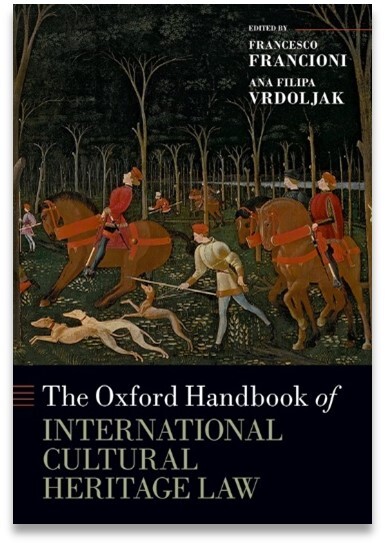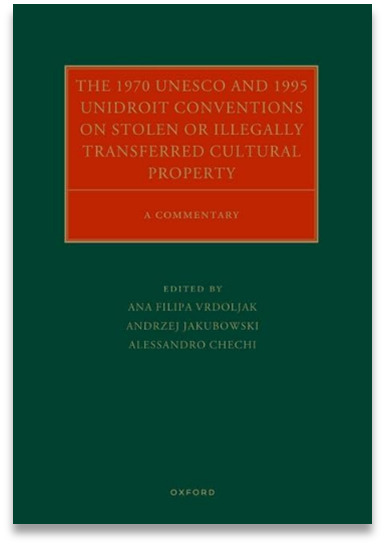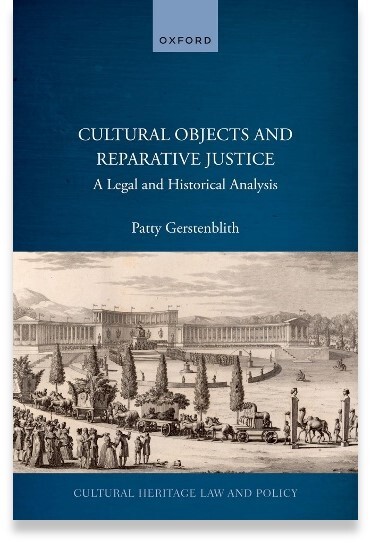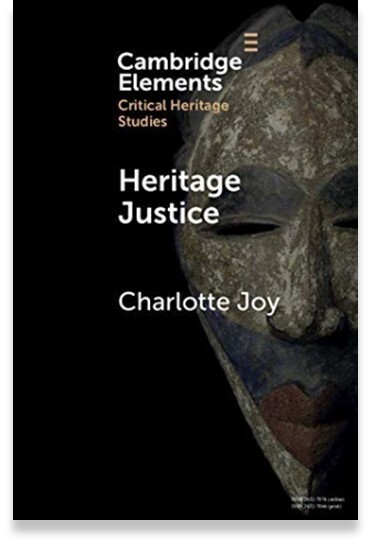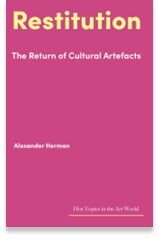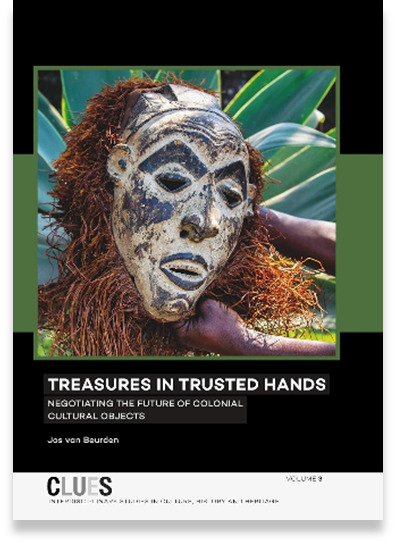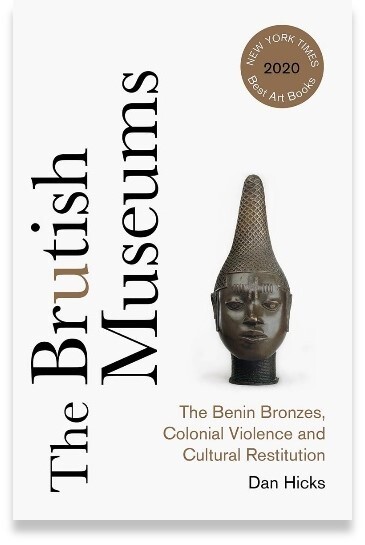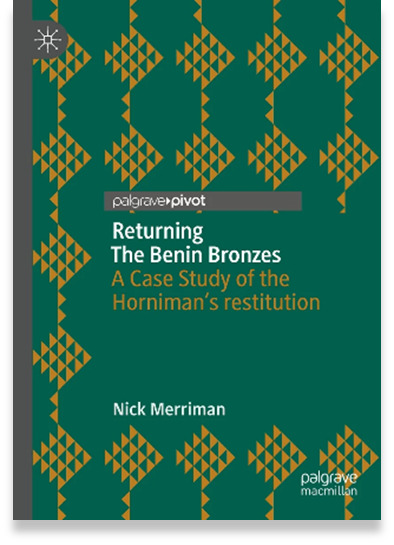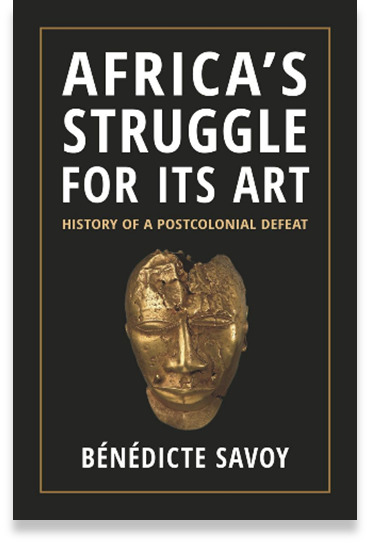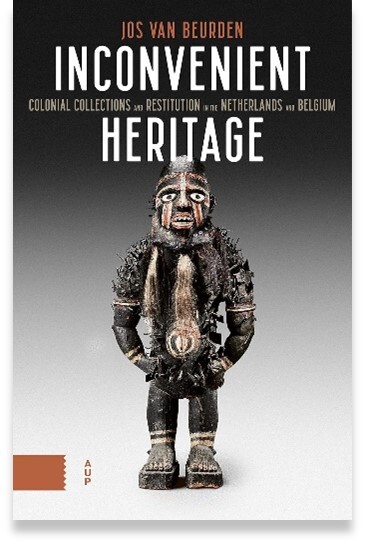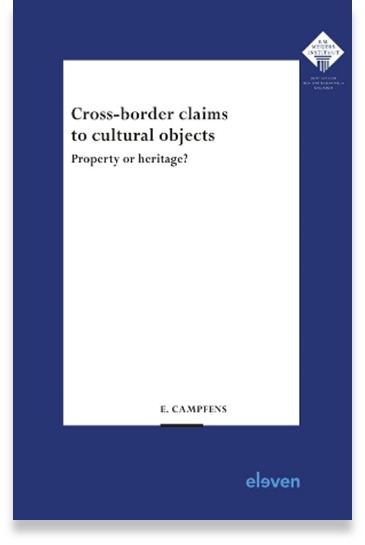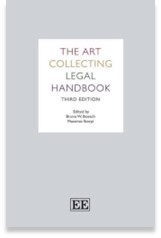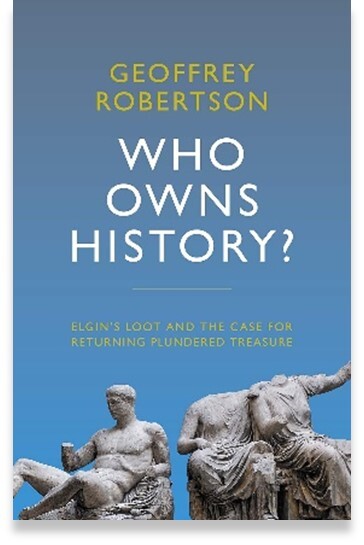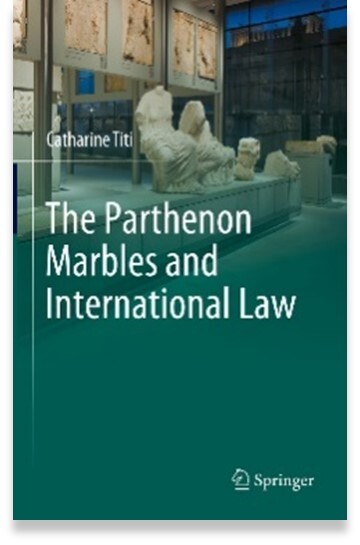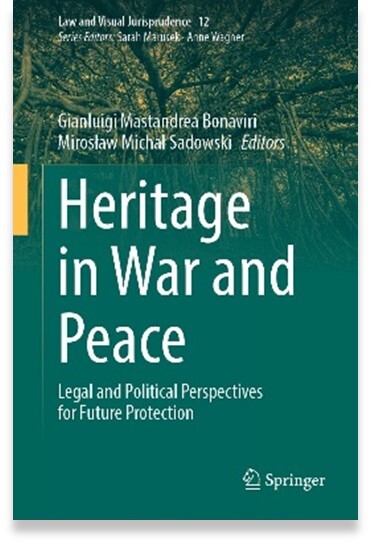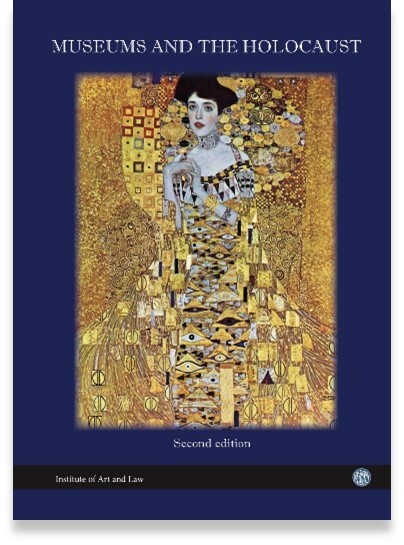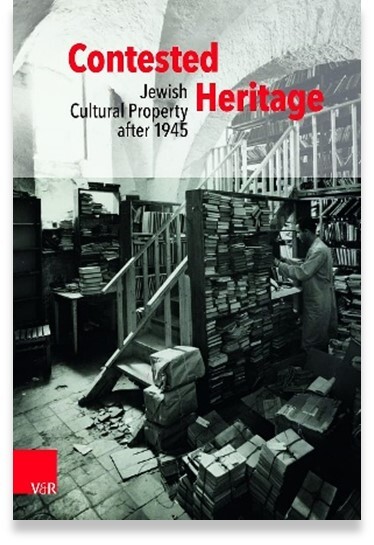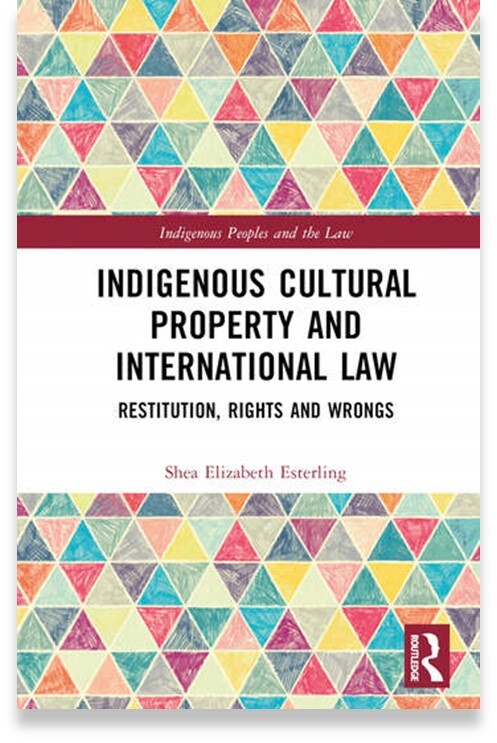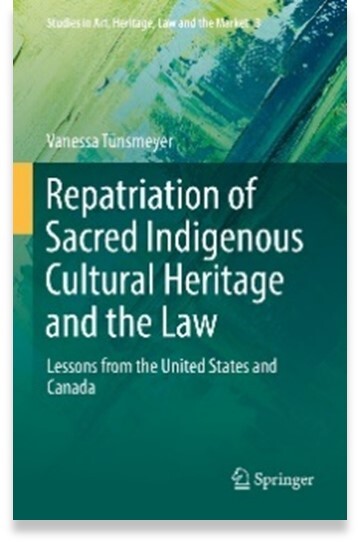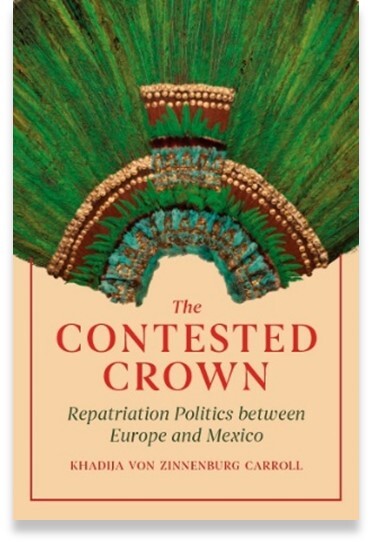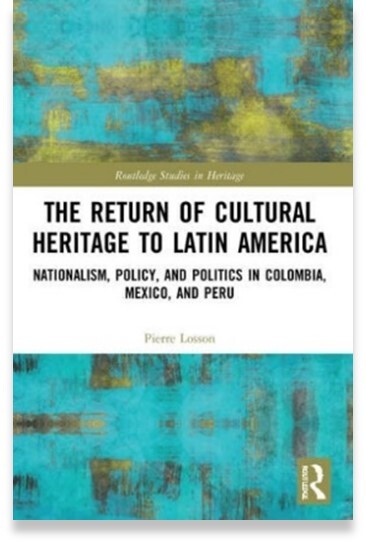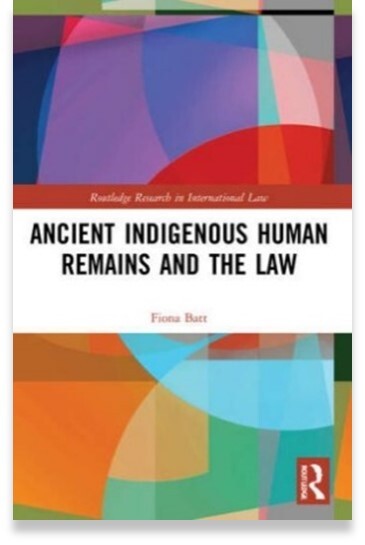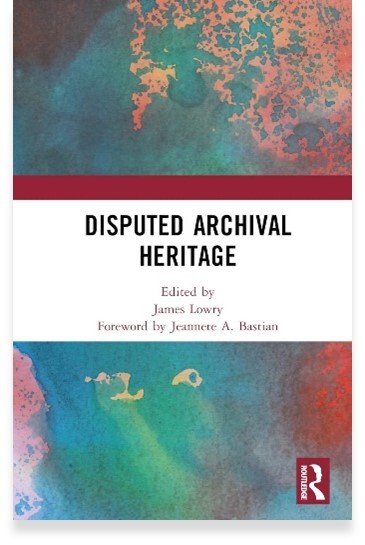Books
Browse featured books. Toggle grid between list view and grid view by using the buttons below on the left.
Books
-
The Oxford Handbook of International Cultural Heritage LawA cutting edge study of the fast developing field of international law on the protection of cultural heritage by taking stock of the recent developments and of the core concepts and current challenges. The legal protection of cultural heritage has come under renewed focus from the international community and states since the 1990s. This is evidenced by the adoption of a range of international instruments. Countries are also enacting cultural heritage legislation or overhauling existing laws within their own national territory.
-
Confronting Colonial Objects: Histories, Legalities, and Access to CultureIn 1978, UNESCO Secretary General Amadou-Mahtar M’Bow compared cultural colonial objects to ‘witnesses to history’. Their treatment is one of the most debated questions of our time. Calls for a novel international cultural order go back to decolonization. However, for decades, the issue has been treated as a matter of comity or been reduced to a Shakespearean dilemma: to return or not to return. This book seeks to go beyond these classic dichotomies. It argues that contemporary practices are at a tipping point. It shows that cultural takings were material to the colonial project throughout different periods (early takings, birth of modern nation state, nineteenth-century scramble for objects) and went far beyond looting. Drawing on the interplay between justice, ethics, and human rights, it develops a theory of entanglement to rethink contemporary approaches. It shows that future engagement requires a reinvention of knowledge systems and relations towards objects, including new forms of consent, provenance research, partnership and a rethinking of the role of museums themselves. It proposes principles of relational cultural justice to confront ongoing historic, legal, and economic entanglements and enable normative transformation.
-
The 1970 UNESCO and 1995 UNIDROIT Conventions on Stolen or Illegally Transferred Cultural Property: A CommentaryAuthored by leading scholars and practitioners from around the world, this Commentary is the first to cover the two leading multilateral treaties on movable cultural heritage in one volume: the Convention on the Means of Prohibiting and Preventing the Illicit Import, Export and Transfer of Ownership of Cultural Property adopted by UNESCO in 1970 and the Convention on Stolen or Illegally Exported Cultural Property adopted by UNIDROIT in 1995. This Commentary is designed to be the authoritative text for academics, lawyers, policymakers, and diplomats on the protection and regulation of cultural objects. Encompassing both public and private international law rules on the trade in cultural objects, it provides a detailed historical and thematic overview. Drawing on the travaux preparatoires and intergovernmental and state practice over the last half century, the Commentary provides an article-by-article analysis of the interpretation and application of these treaties. The 1970 UNESCO and 1995 UNIDROIT Conventions are examined in the working context of other culture conventions including the World Heritage Convention and the Intangible Heritage Convention, as well as related fields of international law, such as international humanitarian law, international criminal law, human rights law, and international economic law. The volume also offers a critical examination of current trends and future directions which are informing the field.
-
Cultural objects and reparative justice : a legal and historical analysisCultural Objects and Reparative Justice provides a comprehensive legal and historical analysis surrounding a highly debated current question: Where should cultural objects that were removed without consent be located? This book follows an innovative, interdisciplinary approach based in law, history, art history, anthropology, and archaeology and proposes a paradigm for reparations. Tracing the historical foundations of the current legal framework, the work closely examines three factors that heavily informed the cultural heritage debate since the late eighteenth century: the rise of the encyclopaedic museum, the development of archaeology as a science, and the appropriation of objects in the context of armed conflict and colonialism. Cultural Objects and Reparative Justice outlines how current cultural heritage laws and ethical guidelines with respect to cultural heritage derive from a background of imperialism and colonialism. The book advocates for a new structure based on reparation, restitution, repatriation, compensation, and market regulation to cease perpetuating past harms and to disincentivize new ones.
-
Heritage JusticeHeritage Justice explores how far past wrongs can be remedied through compensatory mechanisms involving material culture. The Element goes beyond a critique of global heritage brokers such as UNESCO, the ICC and museums as redundant, Eurocentric and elitist to explore why these institutions have become the focus for debates about global heritage justice. Three broad modes of compensatory mechanisms are identified: recognition, economic reparation and return. Arguing against Jenkins (2016) that museums should not be the site for difficult conversations about the past, Heritage Justice proposes that it is exactly the space around objects and sites created by museums and global institutions that allows for conversations about future dignity. The challenge for cultural practitioners is to broaden out ideas of material identity beyond source communities, private property and economic value to encompass dynamic global shifts in mobility and connectivity.
-
Restitution: the return of cultural artefactsDebates about the restitution of cultural objects have been ongoing for many decades but have acquired a new urgency recently with the intensification of scrutiny of European museum collections acquired in the colonial period. This is a book about the return of cultural treasures: why it is demanded, how it is negotiated and where it might lead. The uneven relationships of the past have meant that some of the greatest treasures of the world currently reside in places far removed from where they were initially created and used. This debate forces us to confront an often dark history, and the difficult application of our contemporary conceptions of justice to instances from the past. Should we allow plundered artefacts to rest where they lie – often residing there by the imbalances of history? This book asks whether we are entering a new 'restitution paradigm', one that could have an indelible impact on the cultural sector - and the rest of the world - for many years to come.
-
The return of cultural treasuresIn recent years controversial cases such as the so-called Elgin Marbles have prompted public debate on the return of cultural treasures to their homelands. In this fully revised and expanded third edition of her seminal work, first published in 2007, Jeanette Greenfield analyzes and discusses the historical, legal and political issues surrounding a wide cross-section of similar cases. This edition includes new chapters on wartime plunders, deliberately destroyed art and the return of ethnic art such as Australian aboriginal and Native American art. It also explores the palaeontological and marine archaeology issues at play and examines new approaches taken by museums when dealing with cultural objects and their return.
-
Treasures in trusted hands: negotiating the future of colonial cultural objectsCharting the one-way traffic of cultural and historical objects during five centuries of European colonialism, this book presents examples of disappeared colonial objects and systematises these into war booty, confiscations by missionaries and contestable acquisitions by private persons and other categories. Former colonies consider this as a historical injustice that has not been undone. As there is no consensus on how to deal with colonial objects, disputes about other categories of contestable objects are analysed. For Nazi-looted art-works, the 1998 Washington Conference Principles have been widely accepted. Although non-binding, they promote fair and just solutions and help people to reclaim art works that they lost involuntarily. To promote solutions for colonial objects, Principles for Dealing with Colonial Cultural and Historical Objects are presented, based on the 1998 Washington Conference Principles.
-
The Brutish Museums: the Benin Bronzes, colonial violence and cultural restitutionFew artifacts embody this history of rapacious and extractive colonialism better than the Benin Bronzes--a collection of thousands of metal plaques and sculptures depicting the history of the Royal Court of the Obas of Benin City, Nigeria. Pillaged during a British naval attack in 1897, the loot was passed on to Queen Victoria, the British Museum, and countless private collections. The Brutish Museums sits at the heart of a heated debate about cultural restitution, repatriation, and the decolonization of museums. Since its first publication, museums across the western world have begun to return their Bronzes to Nigeria, heralding a new era in the way we understand the objects of empire we once took for granted.
-
Returning The Benin Bronzes: a case study of the Horniman's restitutionThis book offers a detailed case study of the transfer of ownership to Nigeria in November 2022 of the 72 artworks in the Horniman’s collections looted by the British from Benin City in 1897, as an occasion to explore the current state of the issue of restitution of cultural objects. It argues that we are at a tipping point, where decades of debate but little action about restitution is now changing to a period when at least the most egregious examples of colonial looting are being addressed. It summarises the key issues involved in these returns, outlines the processes and procedures undertaken by the Horniman, and offers recommendations and reflections for the future.
-
Africa’s Struggle for its ArtA major history of how African nations, starting in the 1960s, sought to reclaim artefacts stolen by Western colonial powers, by one of the world’s foremost experts on restitution and cultural heritage. Shortly after 1960, when eighteen former colonies in Africa gained independence, a movement to pursue repatriation of artefacts stolen by former colonial powers was spearheaded by African intellectual and political classes. Savoy looks at pivotal events, including the watershed speech delivered at the United Nations General Assembly by Zaire’s president, which started the debate regarding restitution of colonial-era assets and resulted in the first UN resolution on the subject. She examines how German museums tried to withhold information about their inventory and how the British Museum Act, which protected British collections, came under fire in the House of Lords, but a proposed amendment to the act did not prevail. Savoy concludes in the mid-1980s, when African nations enacted the first laws focusing on the protection of their cultural heritage.
-
Inconvenient Heritage: Colonial Collections and Restitution in the Netherlands and BelgiumThe discussion about objects, ancestral remains and archives from former colonial territories is becoming increasingly heated. Over the centuries, a multitude of items – including a cannon of the King of Kandy, power-objects from DR Congo, Benin bronzes, Javanese temple statues, Māori heads and strategic documents – has ended up in museums and private collections in Belgium and the Netherlands by improper means. Since gaining independence, former colonies have been calling for the return of their lost heritage. As continued possession of these objects only grows more uncomfortable, governments and museums must decide what to do. How did these objects get here? Are they all looted, and how can we find out? How does restitution work in practice? Are there any appealing examples? How do other former colonial powers deal with restitution? Do former colonies trust their intentions? The answers to these questions are far from unambiguous, but indispensable for a balanced discussion.
-
Cross-border claims to cultural objects : property or heritage?Cultural objects have a protected status on account of their intangible value, as symbols of an identity. This has been so since the early days of international law, and today there is an extensive legal framework that ensures this protection. Yet, when it comes to claims by former owners to items such as Nazi-looted art, colonial booty, or more recently looted antiquities, the situation is less straightforward. On the one hand, such claims are often not supported by positive law at all. On the other hand, non-binding regulations urge present possessors to find `just' solutions to claims - not as a legal obligation but as a matter of morality. This raises a fundamental question: if we believe that the application of the law leads to injustice, is it not time to change the way the law is applied?
-
The art collecting legal handbookA cross-border legal guide to the ever-changing maze of rules and regulations when acquiring, moving, and sharing works of art and antiquities. Providing a comprehensive and practical guide, this book will be an essential resource for art collectors and their advisers, alongside dealers, galleries, and museums. It will also be beneficial for lawyers specialising in commercial law, cultural heritage and art law, and intellectual property law.
-
Who Owns History? Elgin’s Loot and the Case for Returning Plundered TreasureThe biggest question in the world of art and culture concerns the return of property taken without consent. Throughout history, conquerors or colonial masters have taken artefacts from subjugated peoples, who now want them returned from museums and private collections in Europe and the USA. Who Owns History? delves into the crucial debate over the Elgin Marbles, but also offers a system for the return of cultural property based on human rights law principles that are being developed by the courts.
-
The Parthenon Marbles Dispute: Heritage, Law, PoliticsThis book offers a fresh take on the history of those famous pieces of ancient sculpture removed from the Acropolis in Athens by Lord Elgin’s men in the early 19th century. It explains how they became the cause célèbre of the larger debates around cultural heritage and restitution now taking place. The subject is one that is currently embroiling museums, governments, universities and the public at large. Herman provides a balanced, thorough and critical account of the history of the Marbles, while considering the legalities of their initial removal and the ethics of their retention by the British Museum. It explains why this particular dispute has not been satisfactorily resolved, and suggests new ways of seeking resolution – for the Parthenon Marbles and for the many other cultural treasures held in museum collections outside their countries of origin.
-
The Parthenon Marbles and International LawThe Parthenon marbles case is the most famous international cultural heritage dispute concerning repatriation of looted antiquities, the Parthenon marbles in the British Museum's 'Elgin Collection'. The case has polarised observers ever since Elgin had the marbles hacked out of the ancient temple at the turn of the 19th century in Ottoman-occupied Athens. In 1816, a debt-stricken Elgin convinced the British government to purchase the marbles, which subsequently entrusted them to the British Museum, where they have remained since then. The ethical and cultural merits of their repatriation have been fiercely debated for years. But what has generally not been considered are the legal merits of their return in light of contemporary international law. This book is the first in legal scholarship to provide an international law perspective of the cause celebre of international cultural heritage disputes and, in doing so, to clarify the new customary international law on the return of cultural property unlawfully removed from its original context.
-
Heritage in war and peace : legal and political perspectives for future protectionThis edited collection, which brings together nearly fifty authors from across the globe and various disciplines, makes a valuable contribution to the field of conservation, covering a wide range of topics regarding the protection of heritage in times of war and peace. Issues explored in the volume include but are not limited to questions surrounding the protection of contentious heritages, unsustainability of the current dichotomic cultural/natural heritage protection frameworks, digitalization of heritage, place of heritage in military conflicts, use of heritage by armed non-state actors, indigenous peoples' relationships with heritage, the intersection of intellectual property (IP) law and heritage, human rights matters linked to heritage protection, and the latest case studies surrounding restitution.
-
Museums and the HolocaustThe 2nd edition of Norman Palmer’s classic work, Museums and the Holocaust. In the twenty years since the first edition was published the scale of the looting and deprivation carried out during the years 1933-1945 has become ever more apparent, and looted art works are resurfacing in museums and galleries around the world. The ways in which museums and governments have responded to the challenges of achieving justice when confronted with claims vary greatly and this book looks at a representative sample of countries to examine their approaches to this issue and the legislation they have enacted. The book contains chapters on each of the countries with restitution committees (Austria, France, Germany, the Netherlands and the United Kingdom), together with a selection of other countries which highlight differences of approach (Australia, Greece, Hungary, Israel, Poland and the United States). Separate chapters examine issues of common concern, including the passing of title (ownership), limitation of actions and immunity from seizure. Transnational developments are also examined, including the discovery of the Gurlitt Hoard, the efforts of the Max Stern Foundation to recover lost works and the role of the Monuments Men during and in the aftermath of the War.
-
Contested heritage: Jewish cultural property after 1945Includes seventeen essays, accompanied by newly discovered archival material and illustrations, which address a wide range of topics: from the shifting meaning and character of the objects themselves, the so-called object biographies, their restitution processes after 1945, conflicting ideas about their appropriate location, political interests in their preservation, actors and networks involved in salvage operations, to questions of intellectual and cultural transfer processes revolving around the moving objects and their literary resonances.
-
Indigenous Cultural Property and International Law: restitution, rights and wrongsExamining the restitution of cultural property to Indigenous Peoples in human rights law, this book offers a detailed analysis of the opportunities and constraints of international law as a tool of resistance and social transformation for marginalized groups. In accordance with an increasing insistence on respect for diverse cultures, and through their own international mobilization, Indigenous Peoples have participated in the construction of a distinct human rights framework. Significant academic inquiry has focused on the substantive gains made by Indigenous Peoples in this context; along with its impact on a body of law that had previously denied Indigenous Peoples a basis for claims to their own cultural materials and practices. Accordingly, this book acknowledges that Indigenous Peoples, as non-state actors, have generated greater substantive and procedural legitimacy in human rights law making. Offering normative insights into the participation of non-state actors in international law making, it also, however, demonstrates that, despite their significant role in constructing the legal framework of human rights in the 21st century, the participation of Indigenous Peoples continues to be structurally limited.
-
Indigenous peoples' cultural heritage : rights, debates and challengesIndigenous rights to heritage have only recently become the subject of academic scholarship. This collection aims to fill that gap by offering the fruits of a unique conference on this topic organised by the University of Lapland with the help of the Office of the High Commissioner for Human Rights.
-
Repatriation of sacred indigenous cultural heritage and the law: lessons from the United States and CanadaThis book examines the ways in which law can be used to structure the return of indigenous sacred cultural heritage to indigenous communities, referred to as repatriation in this volume. In particular, it aims at developing legal structures that align repatriation with contemporary international human rights standards. To do so, it gathers the most valuable lessons learned from different repatriation laws and frameworks adopted in the United States and Canada. In both countries, very different ways of approaching repatriation have been used for several decades, highlighting the context-dependent nature of repatriation. The volume is divided into four parts, looking first at international law, then at the national legal landscape in the United States, followed by Canada, before the different repatriation models are evaluated against the backdrop of human rights law standards. Emphasis is placed not only on repatriation-specific legislation but also on the legal context in which it was developed and operates. In turn, the fourth part develops various models on the basis of these experiences that can be aligned with contemporary indigenous and cultural rights. The book ends by considering the models' suitability for international repatriation and the lessons that can be learned from them.
-
The contested crown: repatriation politics between Europe and MexicoExplores the travels and travails of a fabulous headdress reputed to have belonged to Montezuma, the last emperor of the Aztecs. This feather crown was brought to Europe by Hernando Cortez following the conquest of Mexico. Not long after it arrived in Europe, it was placed in the "cabinet of curiosities" at Ambras Castle, the Austrian residence of the author's ancestors. From there the headdress was removed to Vienna's Weltmuseum in the early nineteenth century, where it has been on view ever since. "El Penacho," as the headdress is called, is considered a national treasure by both Austria and Mexico. The crown has long been the center of political and cultural power struggles. This is at once the biography of a rare cultural object and a history of political collecting and colonizing. The book analyses claims for postcolonial justice through the repatriation case of the headdress, today among the most contested museum claims between Europe and the Americas.
-
The return of cultural heritage to Latin America: nationalism, policy and politics in Colombia, Mexico, and PeruThe Return of Cultural Heritage to Latin America takes a new approach to the question of returns and restitutions. It is the first publication to look at the domestic politics of claiming countries in order to understand who supports the claims and why. Drawing on analysis of articles published in national newspapers and archival documents and interviews with individuals involved in return claims, the book demonstrates that such claims are inherently political. Focusing on Colombia, Mexico, and Peru, the book analyses how return claims contribute to the strengthening of state-sponsored discourses on the nation; the policy formation process that leads to the formulation of return claims; and who the main actors of the claims are, including civil society individuals, experts, state authorities, and Indigenous communities. The book proposes explanations for why Latin American countries are interested in specific objects held in Western museums and why these claims have come to light over the past three decades. The Return of Cultural Heritage to Latin America argues that return claims ought to be the object of public debate, allowing contemporary societies to address the legacy of colonialism.
-
Ancient indigenous human remains and the lawIndigenous peoples are increasingly making requests for the return of their ancestors’ human remains and ancient indigenous deoxyribonucleic acid. However, some museums and scientists have refused to repatriate indigenous human remains or have initiated protracted delays. There are successful examples of the return of ancient indigenous human remains however the focus of this book is an examination of the "hard" cases. The continued retention perpetuates cultural harm and is a continuing violation of the rights of indigenous peoples. This book develops a litigation Toolkit which includes legal and quasi legal instruments from the following frameworks, cultural property, cultural heritage, cultural rights, collective heritage, intellectual property, Traditional Knowledge and human rights. The book draws on a process of recharacterisation. Recharacterisation is to be understood to mean the allocation of an indigenous peoples understanding and character of ancient indigenous human remains and ancient indigenous DNA, in order to counter the property narrative articulated by museums and scientists in disputes.
-
Disputed Archival HeritageDisputed Archival Heritage brings important new perspectives into the discourse on displaced archives. In contrast to shared or joint heritage framings, the book considers the implications of force, violence and loss in the displacement of archival heritage. With chapters from established and emerging scholars in archival studies, Disputed Archival Heritage extends and enriches the conversation that started with the earlier volume, Displaced Archives. Advancing novel theories and methods for understanding disputes and claims over archives, the volume includes chapters that focus on Indigenous records in settler colonial states; literary and community archives; sub-national and private sector displacements; successes in repatriating formerly displaced archives; comparisons with cultural objects seized by colonial powers and the relationship between repatriation and reparations. Analysing key concepts such as joint heritage and provenance, the contributors unsettle Western understandings of records, place and ownership. Disputed Archival Heritage speaks to the growing interest in shared archival heritage, repatriation of cultural artefacts and cultural diasporas.


